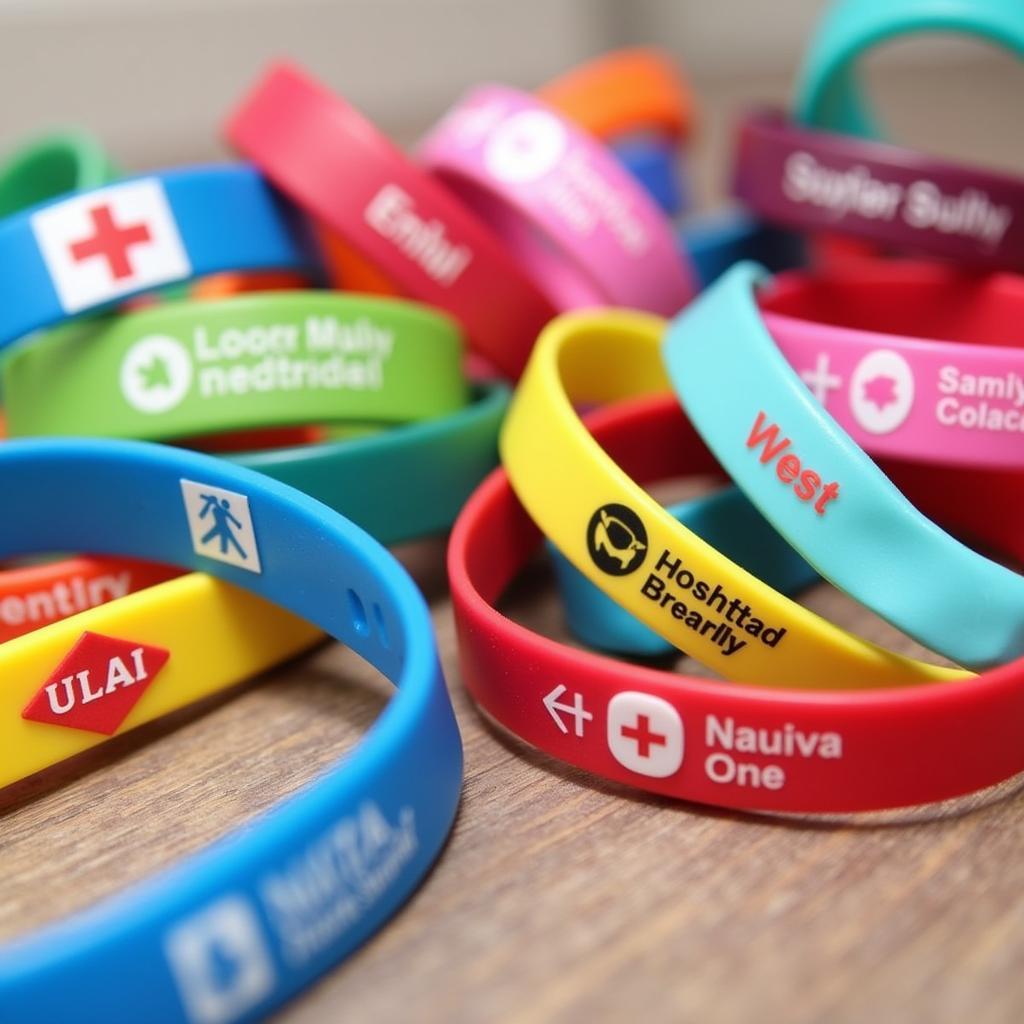You’re in a hospital, whether visiting a loved one or receiving treatment yourself, and you notice a sea of patients with colored wristbands. It’s natural to wonder, “What do those different colors mean?” While each hospital has its own system, yellow wristbands often carry a specific significance: fall risk. Let’s delve deeper into the meaning of yellow wristbands in hospitals and what you should know.
Why Yellow for Fall Risk?
Yellow is a vibrant, attention-grabbing color, making it an ideal choice to alert hospital staff about a patient’s potential fall risk. Just like a yellow traffic light encourages caution, a yellow wristband serves as a visual reminder for healthcare professionals to take extra precautions.
Who Wears a Yellow Wristband?
Various factors can contribute to a patient being designated as a fall risk, leading to them wearing a yellow wristband. These factors can include:
- Age: Elderly patients are more susceptible to falls due to age-related conditions that affect balance and mobility.
- Medications: Certain medications, like sedatives or those affecting blood pressure, can increase the likelihood of dizziness and falls.
- Medical History: Previous falls, surgeries, or existing conditions like muscle weakness or neurological disorders can contribute to fall risk.
- Cognitive Impairment: Patients with dementia or other cognitive impairments might not be fully aware of their surroundings, increasing their risk.
 Elderly Patient with Yellow Wristband
Elderly Patient with Yellow Wristband
What Does a Yellow Wristband Mean for Patient Care?
A yellow wristband is not merely a label but a call for proactive care. It signals the need for heightened attention and specific measures to prevent falls. Here are some ways hospital staff adjust care for patients with yellow wristbands:
- Frequent Check-ins: Nurses and aides might check on these patients more frequently to assess their needs and ensure their safety.
- Assistance with Mobility: Assistance with walking, getting out of bed, or using the restroom is often provided to reduce fall risks.
- Bed Alarms and Safety Equipment: Bed alarms can alert staff if a patient attempts to get up unaided. Non-slip socks and accessible walking aids are also common.
- Room Closer to Nurses’ Station: Placing the patient’s room closer to the nurses’ station allows for quicker response times in case of an incident.
What Can Family and Visitors Do?
Family and visitors play a crucial role in ensuring the safety of patients wearing yellow wristbands. Here’s how you can help:
- Be Aware: Familiarize yourself with the meaning of the yellow wristband and inform hospital staff immediately if you have any concerns.
- Offer Assistance: Offer to help the patient with their needs, like reaching for objects or getting up from a seated position.
- Keep Pathways Clear: Make sure the area around the patient’s bed is free of clutter to prevent tripping hazards.
- Communicate with Staff: If you notice the patient needing assistance or expressing a desire to move, inform a staff member promptly.
What Other Colored Wristbands Might You See?
While yellow typically signifies fall risk, it’s important to note that hospitals may use different color-coding systems. Some other colors you might encounter include:
- Red: What does a red hospital band mean? This often indicates an allergy alert, notifying staff about specific substances the patient is allergic to.
- Purple: This color often denotes a “Do Not Resuscitate” (DNR) order, signifying the patient’s wish to not receive cardiopulmonary resuscitation (CPR) in case their heart stops.
 Different Colored Hospital Wristbands
Different Colored Hospital Wristbands
Conclusion
Understanding the meaning of a yellow wristband in a hospital can contribute to a safer environment for patients. By recognizing its significance, we empower ourselves to be more aware and supportive, ensuring that patients receive the care and attention they need. Remember, a simple color can speak volumes about a patient’s well-being.
Need assistance? Contact us at Phone Number: 02437655121, Email: [email protected] Or visit us at: 298 Cau Dien Street, Minh Khai Ward, Bac Tu Liem District, Hanoi, Vietnam. We have a 24/7 customer support team.